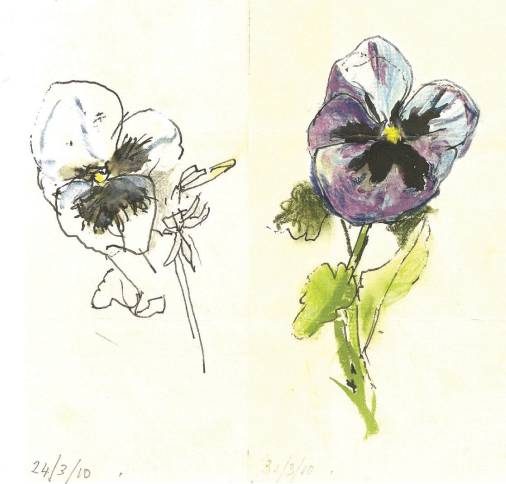More notes after the operation on my right eye (26 March 2010), whose cataract was more rigid and opaque.
This time the onrush of light is less specific and more generalised. It’s not so much that things appear better lit, but, rather that I’m acutely aware of how everything is surrounded by light. The element of air has become the element of light. Just as fish live and swim in water: we live and move through light.
The newly found, ubiquitous light seems quiet and silent; it is shadows and darkness that are noisy.
The light places a hand on your back. You don’t turn round because from a long, long time ago, you recognise its touch. It’s what you first saw and never gave a name to.
The removal of cataracts is comparable with the removal of a particular form of forgetfulness. Your eyes begin to re-remember first times. And it is in this sense that what they experience after the intervention resembles a kind of visual renaissance.
The white paper on which I’m writing today (2?days after the operation) is whiter than anything I’ve become used to seeing. I return to my mother’s kitchen in my childhood: there were comparable whites on the table, in the sink, on the shelves. And those whites of paper and porcelain and enamel contained a promise which this white paper today recalls.
Extracts from ‘Raising the portcullis: some notes after having cataracts removed from my eyes’ written by John Berger, published in the British Journal of General Practice.
Commentary
Notes written by John Berger after his cataracts surgery are literally eye-opening. Only an author as talented as Berger can put his stages of recovery into words that help us imagine what it feels like to regain clear eyesight.
Cataracts surgery is the most common surgery performed in the UK. It’s so common that it can almost feel ‘normal’ to have cataract surgery at some point in your life as you age. Berger paused, reflected and wrote his experience- it’s a fine piece of writing to read and take a moment to appreciate our 20/20 vision better!
John Berger was an English novelist, art critic and painter. He also wrote poetry, screenplays, fiction, essays, etc., the list goes on. His most famous work include ‘G.’ and ‘Ways of seeing’. The latter was adapted as a TV series by BBC.
More info
- About John Berger
- Berger’s interest in the ways of seeing
- Featured image – Berger’s drawing of a blue pansy before and after the operation
- A Fortunate Man, John Berger’s book on a general practitioner (post on this site)
Contributed by
Lekaashree Rambabu
Rate this post
More like this

